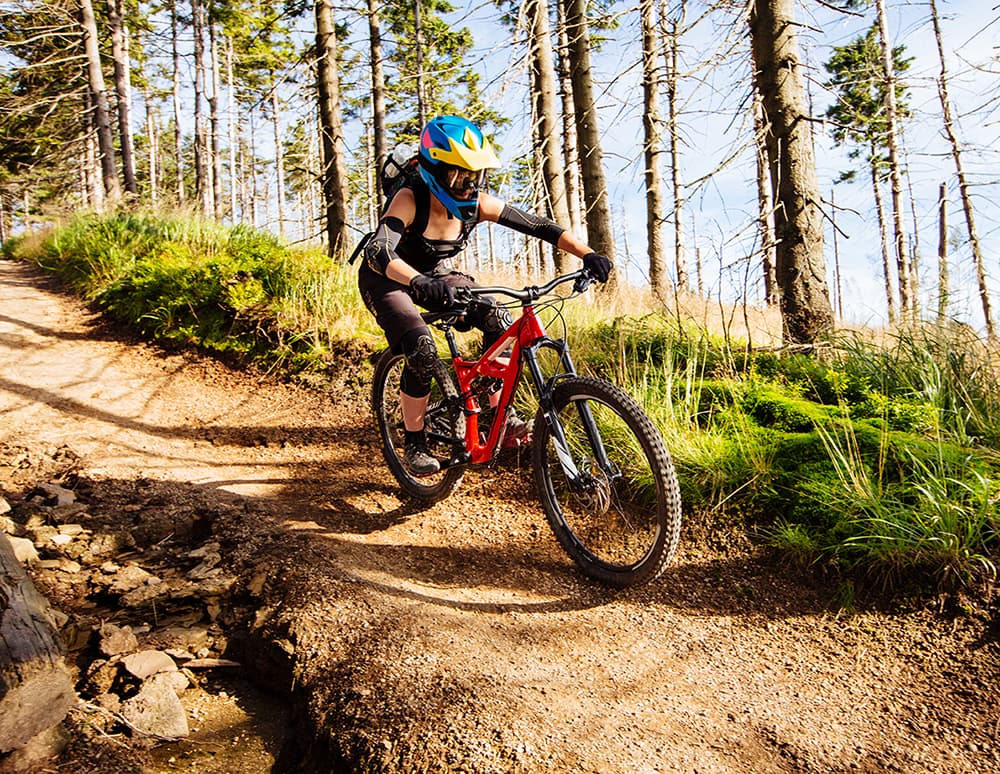Mountain Biking Experts
Our Mountain Biking Doctors
Mountain Biking Treatment Leaders in Central California
Sierra Pacific Orthopedics delivers elite care built around the specific needs of mountain bikers. We make it our mission to keep you in motion, ensuring nothing stands between you and the ride.
Mountain biking offers significant health and fitness benefits, but it also carries a risk of injury. Understanding that every rider’s needs are unique, our doctors are orthopedic and sports medicine specialists who bring focused expertise in orthopedic care to help you recover and return to the trails with confidence.
In sports medicine, the athlete is always the priority. Treatment plans are shaped by performance goals and the desire to resume their sport as quickly and safely as possible. For mountain bikers, working with a sports medicine doctor who understands the physical demands of the sport is essential for a successful recovery.
At Sierra Pacific Orthopedics, our board-certified and fellowship-trained specialists are dedicated to managing mountain biking injuries with precision and care. With extensive experience in sports medicine, they provide the treatment and rehabilitation strategies needed to overcome pain or limitations. Through a collaborative approach, we’ll work with you to find the most effective path forward, so you can get back to riding in the places you love.
While mountain biking delivers excitement and physical benefits, it also carries a risk of injury. However, with proper preparation and a commitment to safety, that risk can be significantly reduced. Key strategies include strength training, conditioning, and targeted stretching—all of which help build resilience and improve performance on the trail. Incorporating specialized warm-up routines or expert-developed workouts can improve your readiness and reduce the potential of injury.
The exercises below are specifically selected to support injury prevention in mountain bikers. This comprehensive routine is designed to enhance performance and durability on the trails. By integrating these movements into your regular training, you’ll not only sharpen your skills but also take proactive steps toward safer, stronger riding.
HIP FLEXOR STRETCH
- Put one knee on the ground and the other leg extended behind you in a lunge position.
- Your front foot should be flat on the ground and your thigh parallel to the ground.
- Slowly push your hips forward until you feel a stretch in your hip muscles.
- Hold stretch for 30 seconds.
- Repeat on the other side.
HAMSTRING STRETCH
- Begin by sitting on the ground, extending one leg straight in front of you and bending the other leg so that the sole of your foot rests against your inner thigh.
- Gently lean forward, extending your hands toward your toes until you sense a stretching sensation in your hamstring.
- Hold for 30 seconds.
- Repeat on the other side.
GLUTE BRIDGE
- Start by lying on your back with your knees bent and your feet resting flat on the ground.
- Press through your heels, elevating your hips toward the ceiling, and contract your glutes when you reach the peak of the movement.
- Gradually lower your hips back to the starting position.
- Repeat for 10 to 15 reps.
CLAMSHELL
- Begin by lying on your side with your knees bent and your feet close together.
- While ensuring your feet remain in contact, raise your upper knee toward the ceiling, contracting your glutes at the pinnacle of the motion.
- Gently lower your knee back to its original position.
- Repeat for 10 to 15 reps on each side.
PLANK
- Begin in a push-up stance, aligning your hands directly beneath your shoulders and maintaining a hip-width separation between your feet.
- Maintain a straight, rigid line from your head to your heels, ensuring proper body alignment.
- Hold for 30 to 60 seconds.
BIRD DOG
- Begin in a hands-and-knees position, with your wrists positioned directly under your shoulders and your knees aligned under your hips.
- Extend your right arm forward and simultaneously stretch your left leg back, making sure to keep your hips level throughout the movement.
- Hold for 2 to 3 seconds, then switch sides.
- Repeat for 10 to 15 reps on each side.
SQUATS
- Begin by positioning your feet at a shoulder-width distance and point your toes either directly ahead or slightly outward.
- Flex your knees and descend, shifting your hips back and down while maintaining an upright chest posture and directing your weight into your heels.
- Propel yourself back to a standing position by pushing through your heels.
- Repeat for 10 to 15 reps.
LUNGES
- Stand with your feet separated at hip width and take a forward step with one foot while simultaneously bending both knees to lower yourself back to the ground.
- Maintain a 90-degree angle with your front knee and keep your back knee hovering slightly above the ground.
- Elevate yourself back to a standing position by pushing up with your front foot.
- Repeat on the other side for 10 to 15 reps.

Training or riding through pain or injury is strongly discouraged. Injuries have the potential to result in extended or indefinite recovery periods. To avoid worsening the condition or causing additional damage, it’s essential to seek timely evaluation from an orthopedic specialist.
Our sports medicine specialists are trained to assess and treat injuries with the expertise required to get you back on track safely. Please request an appointment online or call (559) 256-5200 to consult with one of our specialty-trained sports medicine doctors if you experience:
- Difficulty bearing weight on your foot or leg
- Lingering pain in a muscle or joint despite rest and icing
- A fall on the trail causing a popping sensation in your back, shoulder, knee, elbow, hip, or wrist
- Instability in your ankle, hip, knee, shoulder, or elbow
Common mountain biking injuries include:
- Back or knee pain
- Broken collarbone, wrist, or ankle
- Concussions and other head injuries
- Joint dislocations
- Overuse injuries
- Sprains and strains
- Torn ligaments
At Sierra Pacific Orthopedics, your comfort and well-being are our highest priorities. Our team of specialists in mountain biking injuries is committed to delivering exceptional care with personalized attention. We take the time to understand your unique needs and develop a customized treatment plan that fits your specific injury or condition. From education and rehabilitation to medical and surgical care, we offer a full range of services to support your recovery and help you return to doing what you love—stronger and more confident than before.
Our skilled and experienced doctors focus first on conservative, nonsurgical treatments whenever possible. If surgery is needed, they use the latest minimally invasive techniques to ensure a safe procedure, a faster recovery, and the best possible outcome.
Common Mountain Biking Treatments
We provide personalized care plans for every mountain biker, addressing their specific needs and goals. Below is a list of common injuries and the corresponding treatments often recommended by our specialists for mountain biking injuries.
To learn more, please click on the links below.














